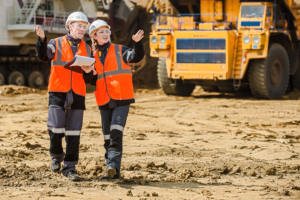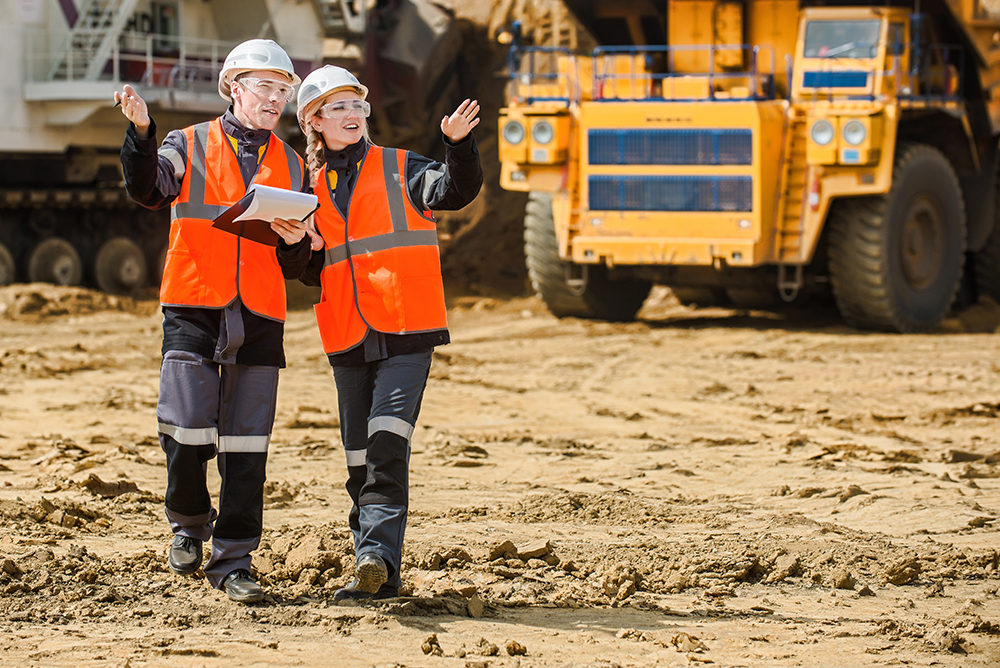Disclaimer: The information on our website is provided for general information purposes only. We make no representations or warranties of any kind, express or implied, about the completeness, accuracy, reliability, suitability or availability with respect to the website or the information contained on our website for any purpose. Any reliance on such information is therefore strictly at your own risk and we are not liable for any damages or losses arising out of or resulting from your reliance on any information contained on our website.
A mining safety engineer evaluates mine safety by inspecting sites or facilities to ensure specifications or standards. Additionally, they may check equipment for safety he mining sites and underground construction work. They may also create, coordinate, and implement mine safety courses for those that work in the mines. Next, watch the following video to learn what a mining safety engineer does.
How to Become a Mining Safety Engineer

To become a mining safety engineer, you must have a bachelor’s degree, and some even acquire additional vocational training. Degrees in mining, minerals, geology, or geoenvironmental sciences are common in this career field. Coursework usually includes engineering, technology, mathematics, design, and production processing classes.
Besides a degree, mining safety engineers must also be skilled in complex problem solving, critical thinking, deductive and inductive reasoning, decision making, strong communication skills, active listening ability, and reading comprehension. It is vital for them to have excellent technical skills, such as a working knowledge of scientific software, map creation software, and project management software.
Internships and joining mining associations are an excellent idea to start exploring this career field. A few associations are the National Mining Association, Association of American State Geologists (AASG), and the American Institute of Mining, Metallurgical, and Petroleum Engineers.
Job Description of a Mining Safety Engineer
A mining safety engineer main job is to keep miners safe and ensure safety and compliance. They do this in a variety of different ways. The most important is inspecting and looking at mining areas to look for the integrity of structures and supports. They look for unsafe timbers, cribbing, roof bolts, electric wiring, elevators, explosives storage, equipment, and at all working conditions to include air quality for the workers. With this data, they make recommendations for modifications for the installation of proper equipment or construction.
Ming safety engineers must also prepare technical reports for use by management personnel, mining, and engineering staff. They include their inspection findings and recommendations for job sites. They may also help mining companies select safe locations for underground or surface mining. A mining and safety engineer uses computers (including hardware and software). They are also expected to solve problems, make decisions, and gather information from relevant sources and process information. Therefore, they often communicate with managers, peers, or subordinates through email, phone, person, or written form. Some are even responsible for training mining staff on safety procedures, first aid, and education on safety measures to look for when mining. During unforeseen accidents that may be involved in helping investigate or lead rescues. They work with state authorities and insurance agencies after explosions, fires, and accidents.
Mining Safety engineers usually work full time, but are often called to work overtime when accidents or rescues occur. They work in conditions that can be unsafe and are generally outside or in mines themselves. At times, they work in an office on computers and use technology devices to create models, collect data, and write reports. Most mining safety engineers work for federal or state agencies or mining companies directly.
Article Citations
Bureau of Labor Statistics, U.S. Department of Labor, Occupational Outlook Handbook, Mining and Geological Engineers.
National Center for O*NET Development. 17-2151.00. O*NET OnLine. This page includes information from O*NET OnLine by the U.S. Department of Labor, Employment and Training Administration (USDOL/ETA). Used under the CC BY 4.0 license. O*NET® is a trademark of USDOL/ETA. RethinkOldSchool, Inc. has modified all or some of this information. USDOL/ETA has not approved, endorsed, or tested these modifications.


